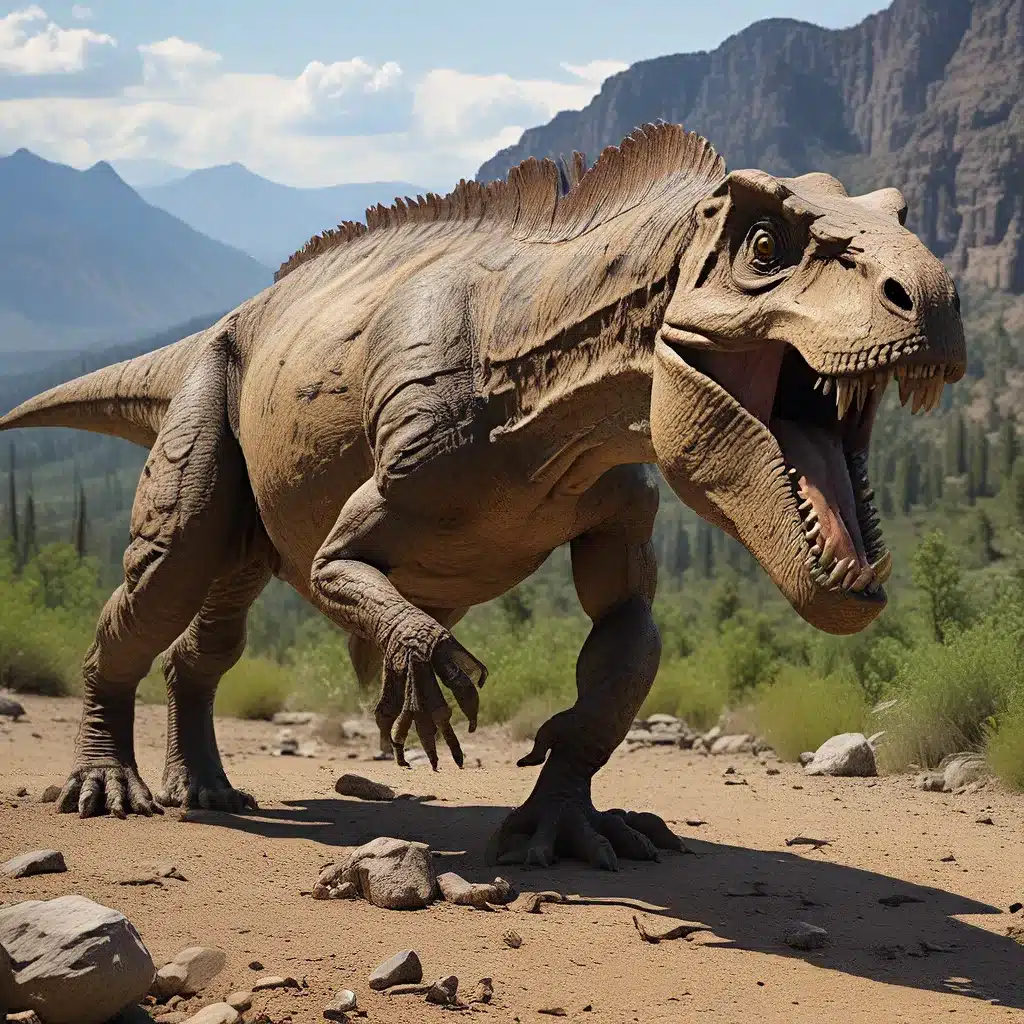
The Tantalizing Promise of De-Extinction
The prospect of resurrecting extinct species, commonly known as de-extinction, has captivated the public imagination for decades. From the iconic Jurassic Park franchise to real-world scientific endeavors, the idea of bringing long-lost creatures back to life has sparked both excitement and trepidation. As our understanding of genetics and paleontology continues to evolve, the potential to “rewind the clock” and revive extinct species has become increasingly feasible, though not without its own set of challenges and ethical considerations.
The Lost Kingdoms, a premier destination for enthusiasts of ancient history and archaeology, delves into the fascinating world of Triassic titans and the cutting-edge science behind their potential resurrection.
Unveiling the Triassic Titans
The Triassic period, spanning from approximately 252 million to 201 million years ago, was a time of remarkable evolutionary innovation. It was during this pivotal era that the first dinosaurs emerged, setting the stage for the subsequent Jurassic and Cretaceous periods and the eventual dominance of these iconic creatures. Among the Triassic titans, a select few have captured the imagination of researchers and the public alike.
The Rise of the Archosaurs
One of the most significant Triassic developments was the emergence of the archosaurs, a diverse group of reptiles that included the ancestors of both crocodiles and dinosaurs. These formidable creatures, ranging from the massive carnivorous phytosaurs to the agile, bird-like pterosaurs, laid the foundation for the evolutionary explosion that would define the subsequent Mesozoic era.
Uncovering the Mysterious Shuvosaurus
The Shuvosaurus, a enigmatic theropod dinosaur that roamed the Triassic landscapes, is a particularly intriguing case. Discovered in the late 20th century, this bipedal predator with its distinctive beak-like jaws has sparked intense debate among paleontologists. Some researchers believe the Shuvosaurus may have been an early omnivore, capable of adapting to a wide range of food sources, while others suggest it represents a unique evolutionary branch within the theropod lineage.
The Towering Presence of Postosuchus
Another Triassic titan that has captivated the scientific community is the Postosuchus, a massive crocodile-like archosaur that could grow up to 6 meters (20 feet) in length. This fearsome predator, with its powerful jaws and armored body, was likely a dominant force in its ecosystem, preying on a variety of smaller Triassic animals. The Postosuchus’s close evolutionary relationship to both crocodiles and dinosaurs makes it a crucial link in understanding the origins of these two iconic reptilian groups.
The Science of De-Extinction
As our understanding of the Triassic period and its inhabitants continues to deepen, the prospect of resurrecting these long-extinct creatures has become a topic of increasing interest and scientific investigation. The advancements in genetic engineering, paleogenomics, and computational biology have opened up new avenues for de-extinction research, raising both excitement and ethical concerns.
Jurassic Park: Fact or Fiction?
The popular Jurassic Park franchise, inspired by Michael Crichton’s novel, has captivated audiences with its vision of resurrecting dinosaurs using ancient DNA. While the specifics of the movie’s approach may be fictionalized, the underlying principles of extracting and sequencing ancient genetic material from fossils and using it to “re-create” extinct species are actively being explored by scientists around the world.
Paleogenomics and the Quest for De-Extinction
The field of paleogenomics, which focuses on the study of ancient DNA and its application to evolutionary and archaeological research, has been at the forefront of de-extinction efforts. Researchers have successfully extracted and sequenced genetic material from a variety of well-preserved fossil remains, including mammoths, Neanderthals, and even some dinosaur species. This has led to the development of advanced computational techniques capable of reconstructing and analyzing these ancient genomes, paving the way for potential de-extinction scenarios.
Ethical Considerations and Challenges
However, the prospect of resurrecting extinct species is not without its ethical and practical challenges. Concerns have been raised about the potential environmental and ecological impacts of introducing Triassic titans or other long-extinct creatures into modern ecosystems, as well as the ethical implications of playing God and interfering with the natural evolution of life on Earth.
Additionally, the technical hurdles involved in de-extinction are considerable, including the difficulty of obtaining high-quality DNA samples, the complexity of “reverse engineering” extinct genomes, and the challenge of successfully gestating and raising these resurrected creatures.
The Future of Triassic Titans
As the scientific community continues to explore the frontiers of de-extinction, the future of Triassic titans and other long-lost creatures remains uncertain. While the potential rewards of reviving these ancient species are tantalizing, the ethical and practical concerns must be carefully weighed and addressed before any real-world attempts at resurrection can be undertaken.
Preserving the Past, Shaping the Future
One potential solution lies in the preservation and study of existing fossil and genomic resources, rather than the active resurrection of extinct species. By deepening our understanding of the Triassic period and the evolutionary trajectories of its iconic creatures, scientists can inform and guide our stewardship of the natural world, ensuring that the lessons of the past are not lost, but rather shape the future of life on Earth.
Responsible Innovation and Collaboration
Ultimately, the future of Triassic titans and the broader field of de-extinction will require a collaborative, multidisciplinary approach, drawing upon the expertise of paleontologists, geneticists, ecologists, ethicists, and policymakers. By fostering open dialogue, prioritizing responsible innovation, and addressing the complex challenges involved, the scientific community can unlock the secrets of the Triassic period and explore the possibilities of resurrecting these long-lost wonders, while safeguarding the delicate balance of our global ecosystem.


